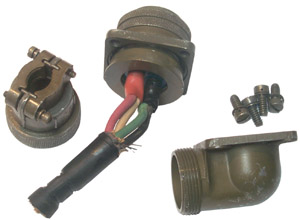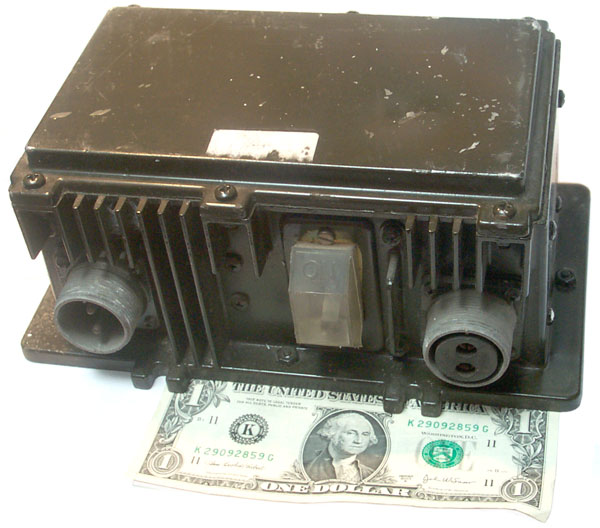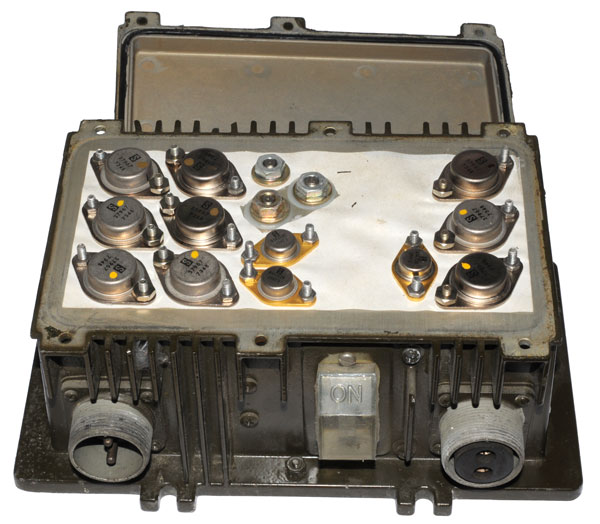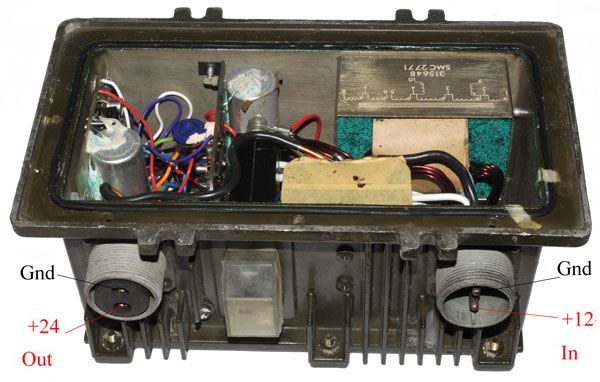Background
This is an inverter to change 12 VDC to
24 VDC at up to 18 Amps.
This is a way to get military vehicle power in excess of my 3 Amp lab
supply.
Connectors
 These
connectors
shown
approximately life size are used for the DC input and
output. They are cutoffs and although I have applied Kroil to the
strain relief nut they have not yet got loose so have not been taken
apart. The cables have four conductors.
These
connectors
shown
approximately life size are used for the DC input and
output. They are cutoffs and although I have applied Kroil to the
strain relief nut they have not yet got loose so have not been taken
apart. The cables have four conductors.
On the Male connector the wiring is:
A: Red & White
B: Green & Black
On the Female connector the wiring is:
A: Red & White
B: Green & Black
If the wiring is the same as for the CX-4720
DC
Power Cable then A is Positive and B is Negative.
Note the connector on the right with the female contacts is the 12
Volt supply and the connector on the left with the male pins accepts
the 24 Volt output. This is the common convention where
the load uses male contacts and the source uses female contacts to
minimize the chance of shorting the power source.

Female Connector: MS 310-8A20 23S (417)
Male Connector: MS 310-8A20 23P (417)
Right Angle shell: SIZE-22
Note the shell screws to a flange that's not part of the connector, but
is free to rotate.
So you can change the angle by loosening the two cable clamp screws and
the four screws that connect the right angle housing to the flange on
the connector and turning the right angle housing to any angle.
Cable Clamp: AN3057-10
The mating connectors are available from William
Perry it's best to phone or write.
Links
eBay seller art-in-part
had many of these in Oct 2008.
back to Brooke's: PRC68, Products for Sale, GRC-206, Time
& Frequency, Military Information, personal home page
[an error occurred while processing this directive] page created 18 Oct
2008






 These
connectors
shown
approximately life size are used for the DC input and
output. They are cutoffs and although I have applied Kroil to the
strain relief nut they have not yet got loose so have not been taken
apart. The cables have four conductors.
These
connectors
shown
approximately life size are used for the DC input and
output. They are cutoffs and although I have applied Kroil to the
strain relief nut they have not yet got loose so have not been taken
apart. The cables have four conductors.